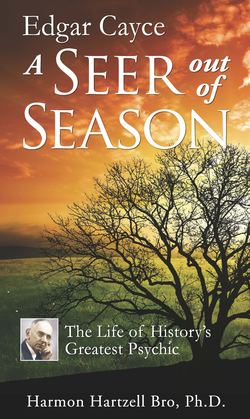Читать книгу Edgar Cayce A Seer Out of Season - Harmon Hartzell Bro - Страница 42
На сайте Литреса книга снята с продажи.
Push, Or Investment for Health
ОглавлениеThe word push, scribbled beside entries in my notes on each day’s readings, tagged what Cayce’s counsel saw as health from how we invest ourselves. The principle here appeared to be “We are what we seek to create.” The approach also embodied how we do it, whether too little, too much, or the wrong way, as well as what we deeply mean or intend as we do it, such as gratification or service, freedom or control, knowledge or love.
It was clear that Cayce did not view the body as a set of interacting tubes and organs, whose physical health came only from what was taken out of it or put into it. The body might better be described as a vessel, shaped and marked by the blows and polishing in its use. This concept appeared, for example, when observers were told to watch closely at the end of one reading session, when Cayce might be seen reentering “the vault” of his body. But even that would be too mechanical an image. The emblem which Cayce preferred, drawing on biblical sources, was of the body as a temple. Like any temple, it could be ignored, it could be used for idolatry and indulgence, or it could help to lift the spirit soaring beyond itself toward others. The issue lay in where and how one would “push” the effort.
The term that Cayce most often used to describe the functioning of organs and systems of the body was “forces.” Apparently he saw tissues and energies in dynamic terms, as thrust and “push” which could be underdone and overdone. One might cleanse and feed the body well, but if it went relatively unused, it could not be expected to stay healthy. The flesh was an instrument for going somewhere, getting things done, building worlds, loving people, creating beauty, truth, and holiness. Not to use it fully was to betray it, so that the very forces in the nerves and glands which fired up passion and direction would strike inward to make the flesh sick. Such illness might be manifest in symbolic form, as seen in what one could not “stomach” or could not bear on “my aching back,” or how one could not “stand” a person or activity. Indeed, just such metaphoric illness was the basis of part of what Cayce called karma in the physical dimension. One reading told a man that his asthma (which almost suffocated him) was set up by his squeezing the life out of others in a prior existence. The implication was that how we pressed ourselves and others, or how we invested ourselves, shaped our health as truly as what we discharged or ate.
Since one dimension of “push” was failure to push enough in useful directions, Cayce in trance spoke firmly about health consequences to those who drifted or indulged themselves, not using the treasures of their talents or experience. He often asked people who sought his aid why they wanted to get well, daring them to set a better life direction. One could see the pattern he addressed in questions from correspondence that betrayed narcissism, hypochondria, or other over-absorption in self. In the view of the readings, bodies were made to be used, love was for creating, and life was for spending. Not infrequently someone given medical counsel might hear a burning citation of the needs of the poor, lonely, or downtrodden, alongside drugs, rubs, and enemas.
But failure to push was no more destructive to health than the opposite pattern—pushing too hard or in the wrong directions. This problem was prominent among Cayce’s counselees, since he tended to draw for counsel independent thinkers who drove or dominated themselves and others. So he offered relaxation procedures, with places and times for getting reflective and refreshed, along with admonitions about balanced lives in which work and play were intertwined under the star of high purpose. Changes of pace were presented not simply for stimulus or distraction, but for survival, since the body could not sustain the compulsive ways so often visited upon it by strong-minded people. Even Cayce himself was sternly warned in his own readings to take breaks, seek contrasts, go on trips, play and go fishing, lest he grow ill and fail to serve the very people for whom he drove himself.
To relieve pressure and stress, there was massage given by someone loving, just as setting out to massage another would help to awaken one’s own sense of unforced vital energies. Exercises were spelled out for each region of the body, and for internal needs of various organs, to implement the proper, unhurried use of “push.”
There were exercises to prepare pregnant women for delivery, exercises to reduce or eliminate the need for glasses, and exercises helpful to meditation. Walking was enjoined on everyone, and swimming often encouraged. A healthy body had to be used physically, but rest and relaxation were a necessary counterpoint to the effort. A period of rest after lunch was often advised, a thrust that might delight those from cultures featuring siesta. Travel, vacations, and sport all got their due. Cayce took prompt account in his readings of limits from injuries and congenital impairments, or exposure hazards to chronic body weaknesses. But a fundamental note was sounded. Like a fine musical instrument, the body would perform best and keep its health if it were used in balance to bring joy into the world.
